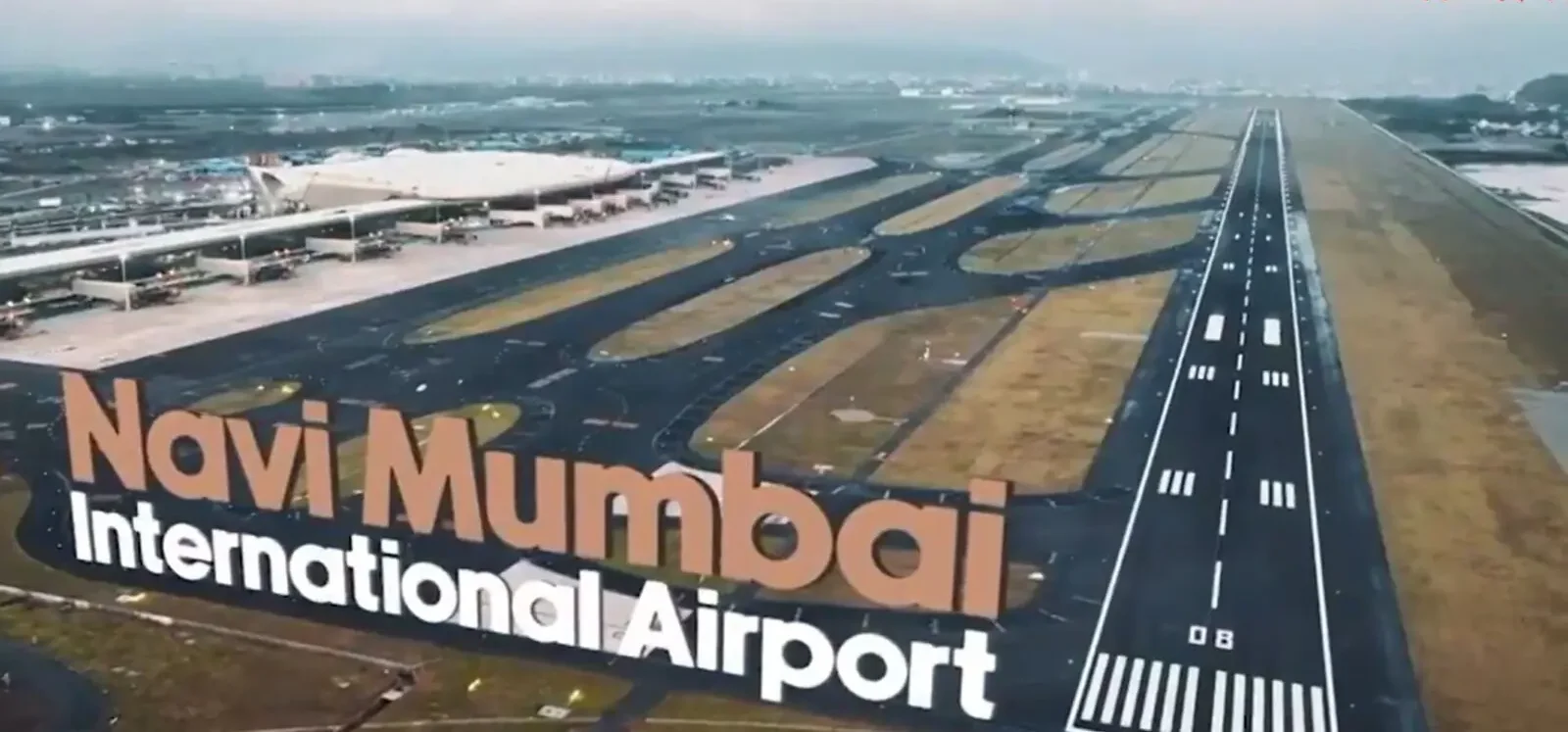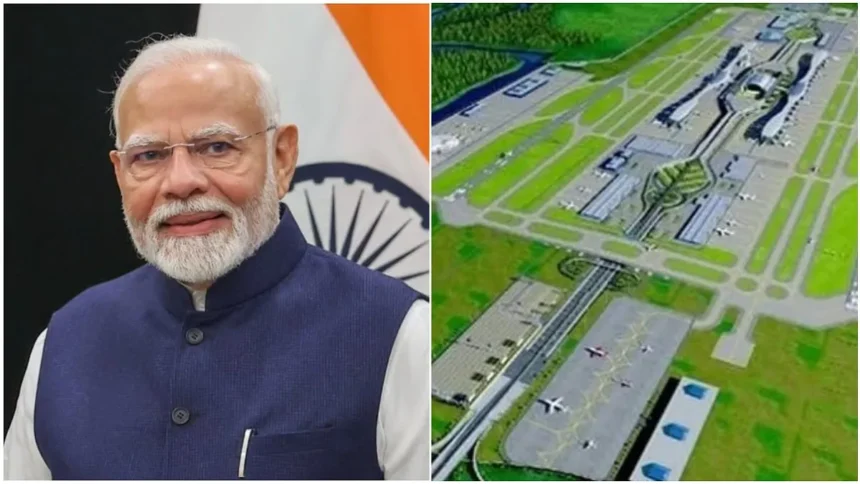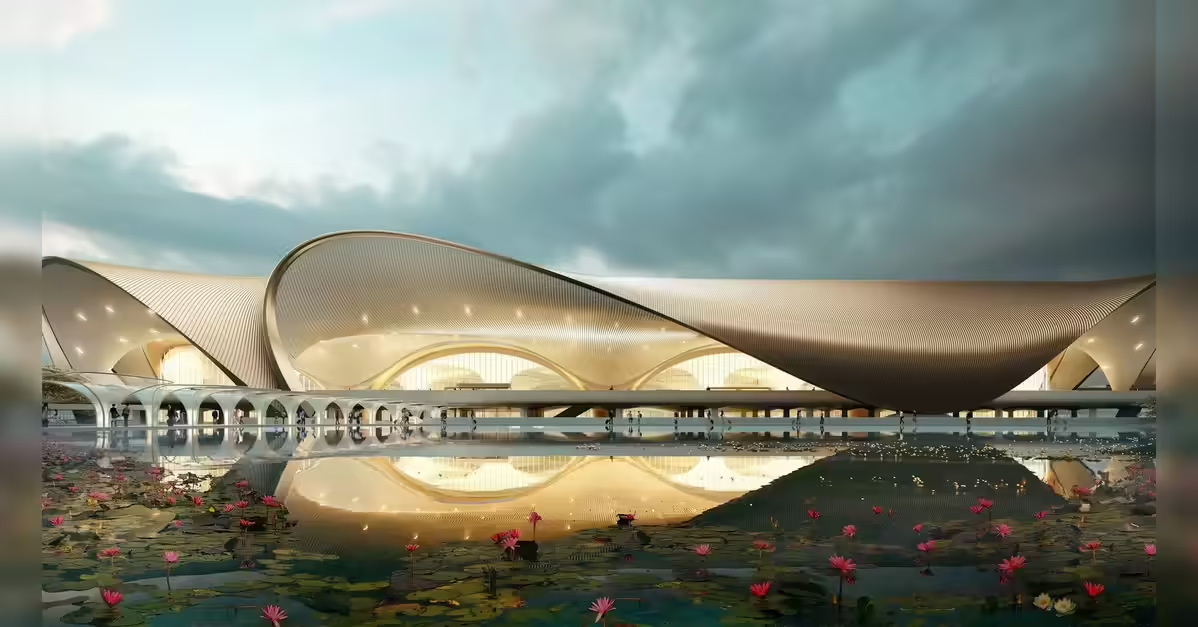In a landmark moment for India’s aviation industry, Prime Minister Narendra Modi is set to inaugurate the Navi Mumbai International Airport (NMIA) — a project that promises to redefine the future of air travel in the country. This cutting-edge facility is being hailed as India’s first fully digital and green airport, designed to complement Mumbai’s existing Chhatrapati Shivaji Maharaj International Airport (CSMIA) and ease the pressure on one of the world’s busiest single-runway airports.
With advanced automation systems, sustainable design principles, and world-class passenger amenities, the Navi Mumbai International Airport is poised to become a global benchmark for smart aviation infrastructure. Let’s dive deep into the details — from its vision and development to technology, sustainability, and its expected impact on the Indian economy and global connectivity.
A Vision Realized: The Story Behind the Navi Mumbai Airport
The idea for a second airport in the Mumbai Metropolitan Region (MMR) has been in discussion for more than two decades. Mumbai, being India’s financial capital and a major gateway for international traffic, has long required an additional airport to handle its growing passenger and cargo demands.
The City and Industrial Development Corporation (CIDCO), a Government of Maharashtra undertaking, first proposed the Navi Mumbai airport project in the late 1990s. However, due to issues like land acquisition, environmental clearances, and rehabilitation of affected villages, the project faced repeated delays.
In 2017, GMR Infrastructure Limited, one of India’s leading airport developers, won the bid to construct and operate the airport through its subsidiary Navi Mumbai International Airport Limited (NMIAL) in partnership with CIDCO. The project officially broke ground in 2018, and now, in 2025, the long-awaited dream of a twin-airport system for Mumbai is finally becoming a reality.
Strategic Location: The Gateway to Growth
Located in Ulwe, Navi Mumbai, near the Panvel area, the new airport is strategically positioned to serve not only Mumbai but also the rapidly growing regions of Thane, Pune, and Raigad. It sits approximately 35 kilometers from the existing CSMIA and is easily accessible via major highways, railways, and future metro lines.
The airport’s location is designed to enhance connectivity to the western and southern parts of India, with upcoming infrastructure such as:
-
Mumbai Trans Harbour Link (MTHL): The 22 km sea bridge will connect South Mumbai directly to Navi Mumbai, reducing travel time to under 30 minutes.
-
Navi Mumbai Metro: Providing seamless connectivity from the city to the airport terminal.
-
Dedicated Expressways: The Mumbai-Pune Expressway and Sion-Panvel Highway will ensure smooth access for road travelers.
This connectivity network positions the Navi Mumbai Airport as not just an aviation hub but a major economic engine for the region, expected to boost trade, logistics, and tourism.

Design and Architecture: A Blend of Technology and Tradition
One of the most striking features of the Navi Mumbai International Airport is its architectural design, inspired by the rich cultural heritage of India. The terminal building draws aesthetic cues from the Lotus flower, symbolizing purity and progress, and incorporates modern materials with eco-friendly elements.
The design, developed by globally acclaimed architect Zaha Hadid Architects, combines elegance and efficiency. The terminal features:
-
Wave-like roof structures allowing natural light to flood the interiors.
-
Expansive glass facades to reduce artificial lighting requirements.
-
Smart orientation and landscaping to optimize energy consumption.
-
Advanced air traffic management towers equipped with the latest radar and control systems.
The airport is being constructed in four phases, with the first phase designed to handle 20 million passengers annually. Upon completion, the full airport will have the capacity to handle 90 million passengers per year — making it one of the largest in the world.
India’s First Fully Digital Airport
What truly sets the Navi Mumbai International Airport apart is its complete digital ecosystem. It’s not just an airport — it’s a smart aviation hub.
Key Digital Features:
-
Contactless Check-in and Boarding:
Using facial recognition and biometric verification, passengers can experience a completely contactless journey from entry to boarding. The DigiYatra platform will be fully integrated here. -
Automated Baggage Handling System (BHS):
A state-of-the-art baggage management system will ensure faster and more accurate luggage transfers, reducing waiting time and eliminating mishandling. -
AI-Driven Operations:
Artificial intelligence will be used for crowd management, real-time flight tracking, and energy optimization. -
Smart Security Screening:
Advanced CT scanners and automatic tray return systems will enhance security while speeding up passenger processing. -
Digital Retail and Dining Experience:
Passengers can pre-order meals, shop online, and even access virtual lounges through the airport’s official app. -
Real-Time Data Dashboard:
Airport management systems will monitor passenger flow, gate usage, and aircraft turnaround times — ensuring operational excellence.
This digital-first approach makes Navi Mumbai Airport a future-ready hub, capable of adapting to evolving aviation technologies, including autonomous service vehicles and next-gen air traffic control systems.
Green and Sustainable: A Model for Eco-Friendly Aviation
The Navi Mumbai International Airport is also being hailed as India’s greenest airport. Sustainability has been deeply integrated into every aspect of its design and construction.
Environmental Highlights:
-
Carbon-Neutral Operations:
The airport aims to achieve net-zero carbon emissions by using solar energy, electric vehicles, and energy-efficient building systems. -
Rainwater Harvesting and Recycling:
Advanced systems will collect and reuse rainwater, reducing dependency on municipal supply. -
Waste Management:
Smart waste segregation and composting facilities will ensure minimal environmental impact. -
Mangrove Conservation:
CIDCO and NMIAL have undertaken large-scale mangrove plantation drives to restore ecological balance in the surrounding areas. -
Acoustic and Air Quality Control:
Sound barriers and pollution control systems have been implemented to maintain ambient environmental standards.
This focus on sustainability is in line with India’s “Net Zero by 2070” commitment and will serve as a model for future infrastructure projects across the country.

Economic Impact: Boosting India’s Aviation and Regional Economy
The Navi Mumbai International Airport is more than just an infrastructure project — it’s an economic catalyst. It’s expected to generate massive growth across multiple sectors.
1. Employment Opportunities:
During construction, the project created over 50,000 direct and indirect jobs. Once operational, it will provide employment for thousands more — in aviation, logistics, hospitality, and retail.
2. Regional Development:
Navi Mumbai, Ulwe, and Panvel are set to transform into new economic hubs. The surrounding areas are already witnessing a boom in real estate, with new residential, commercial, and industrial projects emerging.
3. Boost to Tourism and Trade:
The airport’s proximity to western ports and industrial zones will enhance cargo handling efficiency. This will directly boost India’s export potential and tourism sector, connecting Maharashtra to major international destinations.
4. Reducing Congestion at Mumbai Airport:
CSMIA currently handles around 45 million passengers annually, operating beyond its design capacity. With NMIA sharing the load, Mumbai’s overall air traffic will be smoother, with fewer delays and better connectivity.
5. Global Connectivity and Competitiveness:
Navi Mumbai’s airport will position India as a major international transit hub, competing with airports in Dubai, Singapore, and Doha for passenger and cargo traffic.
Connectivity and Transport Infrastructure
One of the airport’s greatest strengths lies in its integrated connectivity plan. Authorities have ensured that the airport will be seamlessly linked to all major modes of transportation.
-
Road: Direct access via the Mumbai Trans Harbour Link, Sion-Panvel Expressway, and the proposed Coastal Road extensions.
-
Rail: Connection through the suburban railway network and the upcoming Mumbai Metro Line 8 extension.
-
Sea: The nearby Nhava Sheva port area allows for potential future integration of sea-air cargo services.
In the long term, the airport will also connect to the proposed High-Speed Rail Corridor and Dedicated Freight Corridor (DFC), strengthening India’s logistics backbone.
Passenger Experience: Luxury Meets Convenience
From the moment travelers step into the terminal, they will experience a blend of luxury, efficiency, and cultural essence.
-
Spacious Terminals: Designed to reduce congestion and enhance comfort.
-
Art and Culture: Indian art installations and digital displays will reflect the cultural diversity of Maharashtra.
-
Retail & Dining Zones: A mix of global brands and local cuisine outlets will create a vibrant travel experience.
-
Smart Lounges & Co-working Spaces: For business travelers, digital lounges with Wi-Fi and charging pods will make transit time productive.
-
Smart Navigation: Indoor navigation and real-time updates will help passengers reach gates, restaurants, and restrooms easily.
The airport will redefine what it means to fly from Mumbai, offering a world-class travel experience that rivals international standards.
Challenges Faced and How They Were Overcome
The journey to make NMIA a reality wasn’t smooth. The project faced several hurdles:
-
Land Acquisition & Rehabilitation: Over 3,000 families from surrounding villages needed to be relocated with fair compensation and housing.
-
Environmental Concerns: The site included mangrove forests and low-lying areas that required careful ecological restoration.
-
Engineering Challenges: The terrain demanded extensive landfilling and ground leveling.
-
COVID-19 Delays: The pandemic slowed construction schedules and disrupted global supply chains.
Despite these obstacles, strong coordination between CIDCO, GMR, and government agencies ensured steady progress, ultimately bringing the project to completion.
A Milestone for India’s Aviation Future
The inauguration of Navi Mumbai International Airport is not just an infrastructure achievement — it marks a new era for India’s aviation ecosystem. With India expected to become the world’s third-largest aviation market by 2030, projects like NMIA will be crucial in supporting that growth.
By combining digital innovation, sustainability, and passenger comfort, the Navi Mumbai Airport sets new benchmarks for future airports across India — from Jewar (Noida International Airport) to Dholera and Chennai’s upcoming terminals.










